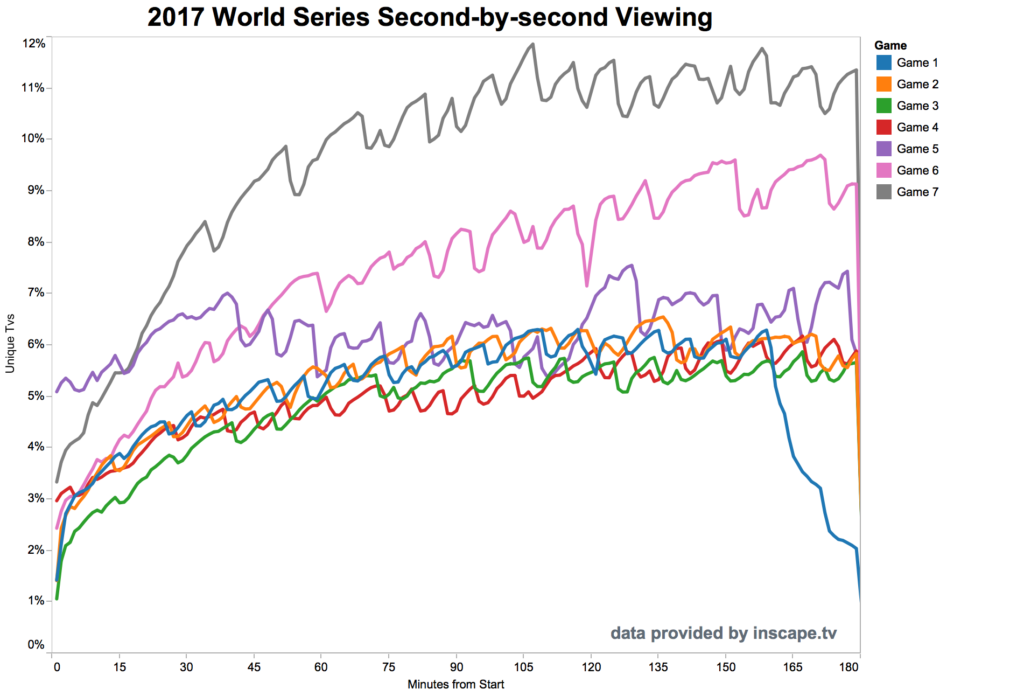ACR Is So 2018. TV Ain’t Close to Dead It's Meta-Morphing
You see studies about peak TV and how overwhelming it is, and it’s hard to disagree. And you hear talk of the NFL in the context of sagging ratings all around, and it's also hard to argue. But those are contrasting indicators, no? There are more good indications for TV—as a device. First off, take smart TV sales. Last year they hit $115 Billion—by 2025, that could climb to $300B. Now that we see that people will always eat up that lean-back experience, what’s also true is the smartness of everything-- from the TV to the services-- and that’s what we are all talking about, really. Not the death of TV but the caterpillar to alien-esque butterfly metamorphosis. That transformation is anecdotal of course. It can be seen in Alan Wolk’s pondering the meaning of why 90% of SVOD is watched on a TV. And in a separate post this week, Wolk takes joy in nose-goosing those who trumpet pay TV’s lost 1 million subs in Q3 without pointing out that 900k joined a new vMVPD service. The morphing can be seen in TVREV’s exclusive video of Erin Andrews interviewing CMOs on the future of advertising. They want branded content but they also like TV. It can be seen in studies that proclaim Millennials care more about TV (and its ads) than YouTube. So when Linda Yaccarino calls for a measurement summit one can imagine the dialogue “Now that we can see everything at scale down to the second based on what’s actually on the screen, AND we can track the ad running to actions taken on other devices as a result--- what the hell are we waiting for again?!!"The World Series reminded us why TV is still a force for reach and time. In the end, iSpot.tv counted 9.8 Billion TV ad impressions spread across 181 brands and almost 900 airings. And that’s not two-second thumb-flippers like digital, that’s 7+ hours of on-screen air time. TV has chops!
Now Let’s Talk About This Picture (Taken from the TV Glass)
Notice those dips? Pitching changes and ad breaks, no doubt. But what’s coolest? Those aren’t sleep times for panelists, they are readings taken from the glass of smart TVs. Millions of them in fact, spread across the country. And that ACR (automatic content recognition) data is what surely will be on the minds of folks at the next measurement mix-up. This isn’t a fad, this is what transformation looks like:
Consider ACR in the last 7 days:
- Nielsen is starting to wake up to Gracenote’s data for audience targeting, but they will need to cough up big dollars to get active data from the bigger OEMs.
- Watch Inscape’s Jodie McAfee talking to Andy Plesser @ Beet.tv about the differences in ACR providers and how he sees the landscape.
- Alan Wolk’s look at TV’s Attribution Weapon paints ACR as the aid to help advertisers prove what they've long hunched: TV advertising does actually drive results—and with multi-touch attribution, they are deterministically measureable.
- Using iSpot.tv’s ACR data you can also find out cool things like the fact that people are growing tired of McDonald’s grandma while pondering which KFC Colonel is better.
- Viant is using Inscape ACR in its marketing cloud to show Brands That Are Making the Biggest Impression on NFL Fans.
- You can even decipher fake news: WSJ used Samba’s ACR data to track Trump’s (lack of) discernible impact on NFL ratings
 These reasons and more are why TV[R]EV is taking a hard look at the ACR businesses that are disrupting it all. We've got not one, but two awesome reports on the topic, due out next week. Hit up YoTVREV <at> Gmail.com to be on the early distro.
These reasons and more are why TV[R]EV is taking a hard look at the ACR businesses that are disrupting it all. We've got not one, but two awesome reports on the topic, due out next week. Hit up YoTVREV <at> Gmail.com to be on the early distro.

